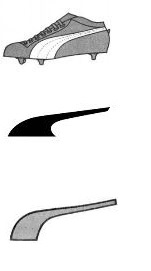Trademark agency Abcor - protect your trademark
Contact
If you have questions or want to know more about our services?Please mail: info@abcor-ip.com
Please call: 31 (0)71 576 3116
The plaintive argues that the new claims are misleading. The packaging says 'renewed taste', but also 'Parodontax ORIGINAL'. This is a completely new product with a different taste and a tingling sensation on the tongue. The use of the term ORIGINAL is therefore misleading. GKS (the new owner) claims that ORIGINAL refers to the oldest version of Parodontax and that only its flavor has been modified.
Both the advertising board and the board of appeal agree with the complainant. The combination of the words 'Original', 'renewed taste' and the familiar red packaging suggests a slight change. GSK admits that about half of the ingredients have been replaced. For example, the characteristic herbal extracts have been replaced by aromas.
If a manufacturer wants to renew an 'Original' in the way that GSK has done, the consumer (and especially existing users) ought to be informed about this appropriately in order to avoid false expectations. Just reporting that the taste has been renewed is not enough. The claims are misleading. GSK is requested to use different claims on their packaging.
advertising-law
